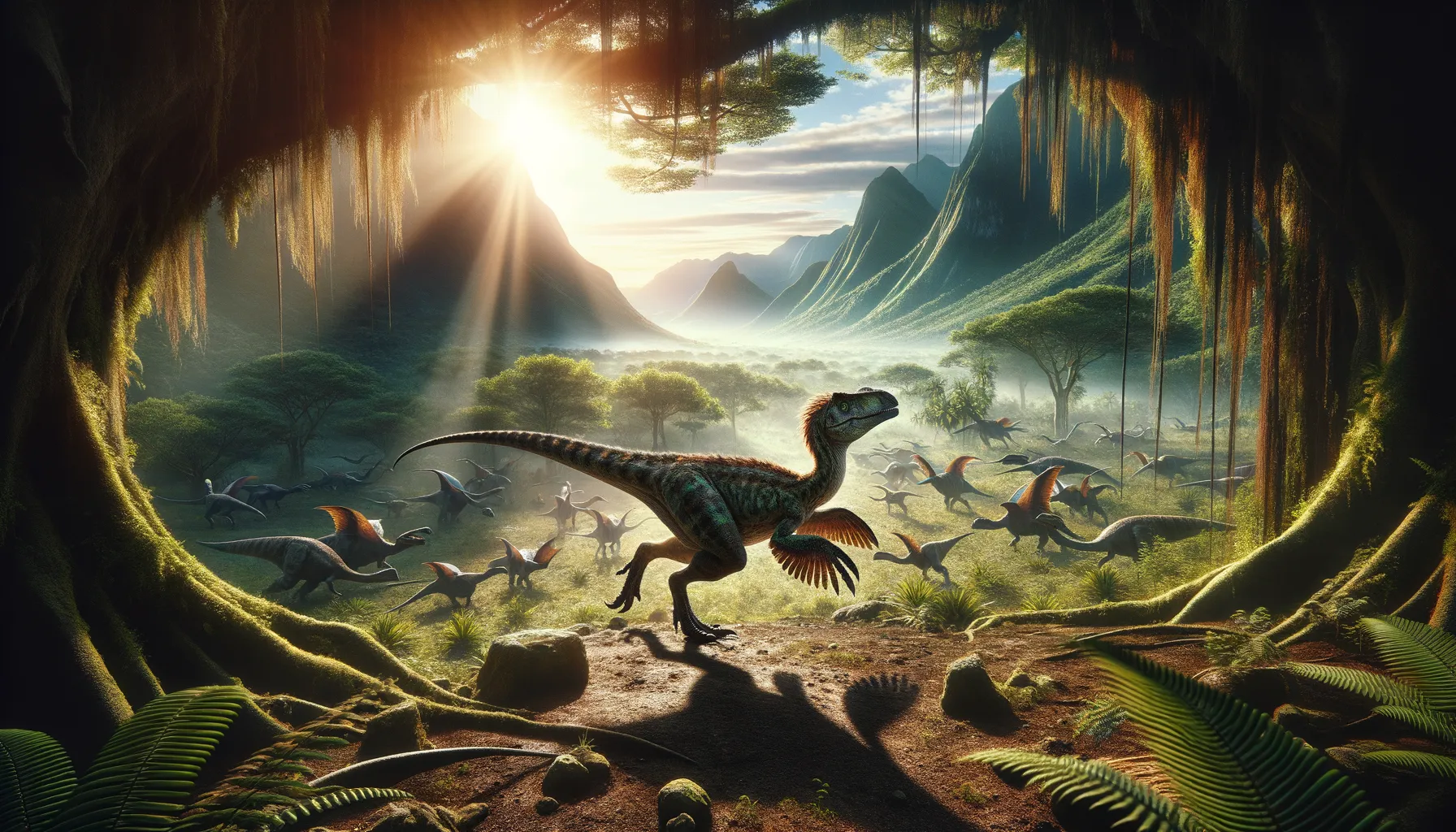
Hulsanpes
Small but swift, a relic of the Cretaceous.
Period
Cretaceous
Length
Roughly 50 centimeters in length.
Height
About 30 centimeters tall.
Weight
Approximately 2 kilograms.
Hulsanpes was a small theropod dinosaur that lived during the Late Cretaceous period. Known for its potentially agile and swift movements, it was a relatively small creature with a bird-like build. Discovered in Mongolia, Hulsanpes provides insight into the diversity of small theropods in Asia during that time. Its precise classification has been debated, with some theories suggesting close relations to early birds.
Diet
Hulsanpes was likely an insectivore, feeding on small insects and possibly the eggs of other creatures. Its small size and probable agility suggest it was adept at catching fast-moving prey.
Hunting
This dinosaur likely employed a stalking or ambush strategy to catch its prey. Its lightweight and nimble body would have allowed it to move quietly and quickly in search of food.
Environmental challenges
Hulsanpes lived in a period marked by environmental changes, including varying climates and vegetation. Competition for food with other small predators would have been a constant challenge. Additionally, the presence of larger predators posed a significant threat, necessitating keen survival instincts.
Speed
Likely quite agile given its small size.
Lifespan
Estimated to be around 10 to 20 years.
First discovery
Discovered in Mongolia in 1970.
Fun Facts
- Hulsanpes was a small, bird-like dinosaur that lived during the Late Cretaceous period.
- Its name, 'Hulsanpes', means 'foot from Hulsan', named after the site where its fossils were found in Mongolia.
- Hulsanpes is believed to have been a swift and agile runner, possibly using its speed to escape predators.
- It is part of a group of dinosaurs known as theropods, which also includes the famous Tyrannosaurus rex.
- Hulsanpes had a unique ankle structure that suggests it might have had some special adaptations for running.
- Despite being a dinosaur, Hulsanpes shared many features with modern birds, hinting at the close evolutionary relationship between the two.
- Only a partial foot of Hulsanpes has been discovered, making it a mystery that continues to intrigue paleontologists.
Growth and Development
Hulsanpes, like many theropods, probably grew rapidly during its early years. This quick growth likely helped it avoid predation in its vulnerable juvenile stages. It may have reached its full size in just a few years, adapting to its environment as it matured.
Habitat
It inhabited what is now the rocky and arid regions of Mongolia, characterized by open plains and sparse vegetation. This environment provided both challenges and opportunities, such as hiding spots from predators and ample hunting grounds for small prey.
Interaction with other species
Its interactions with other species would have been primarily competitive, especially with other small theropods. Hulsanpes might have engaged in territorial disputes or scavenged from the kills of larger predators. Its presence in mixed-species ecosystems implies complex ecological interactions.
Natural lifespan
Hulsanpes likely lived up to 20 years in the wild if it successfully avoided predation.
Reproduction
Hulsanpes probably laid eggs, like many other theropods, in nests built from surrounding materials. It is not clear if it engaged in any parental care, but its small size may have necessitated some protection or concealment of nests.
Social behaviour
Hulsanpes may have been a solitary creature, primarily interacting with others of its kind during mating seasons. However, it might have also formed small groups to increase hunting success or protection from predators.
Fossil locations
Fossils of Hulsanpes have been discovered in the Nemegt Formation of Mongolia, a region known for its rich dinosaur fauna. This area provides critical insights into the ecosystems of Late Cretaceous Asia.
